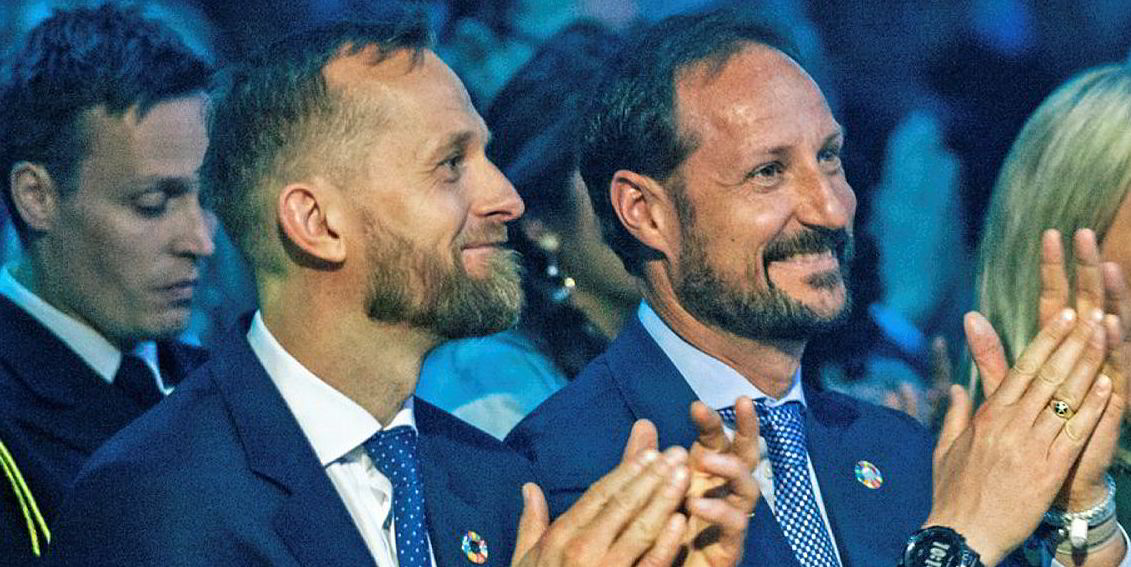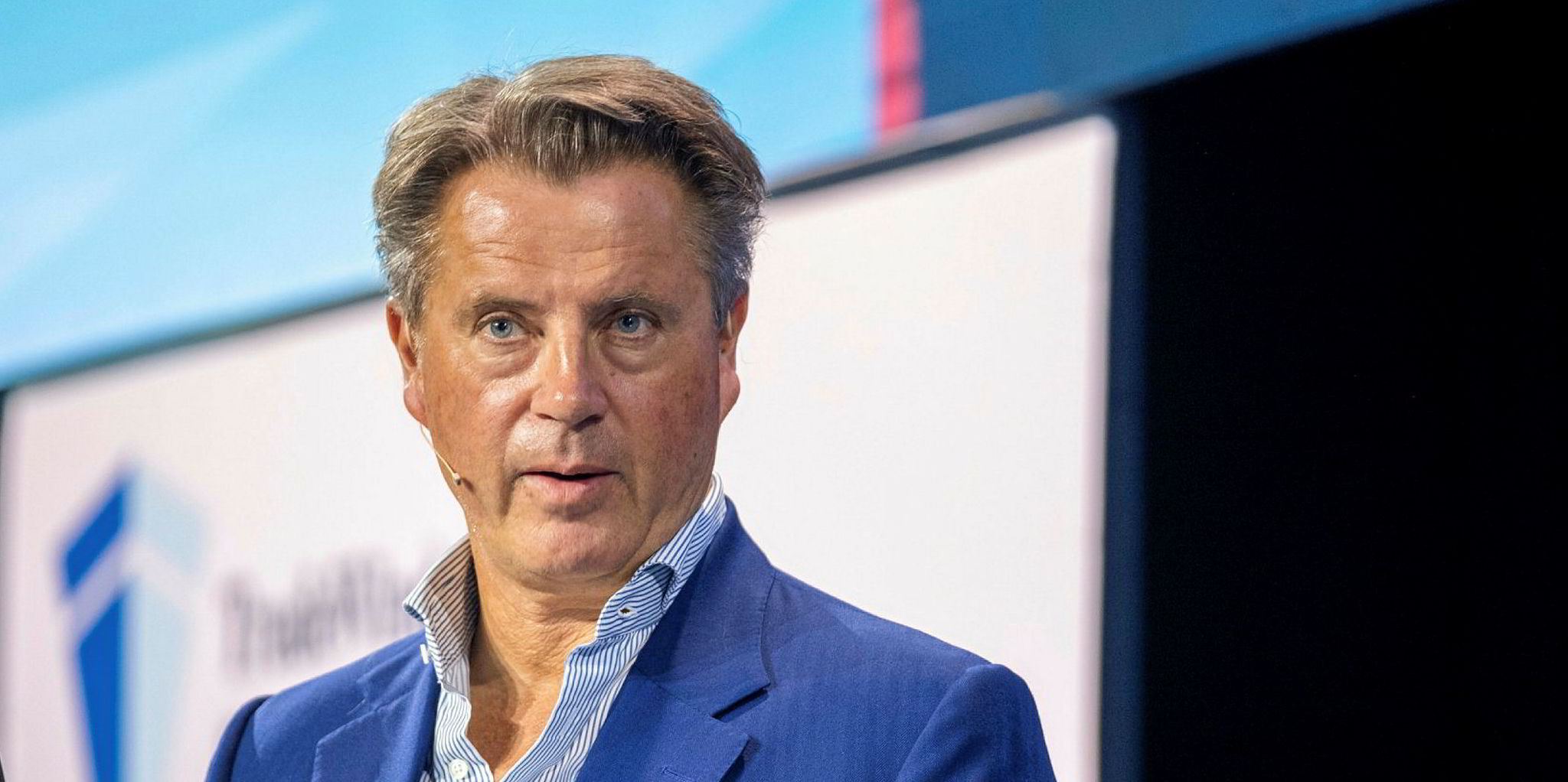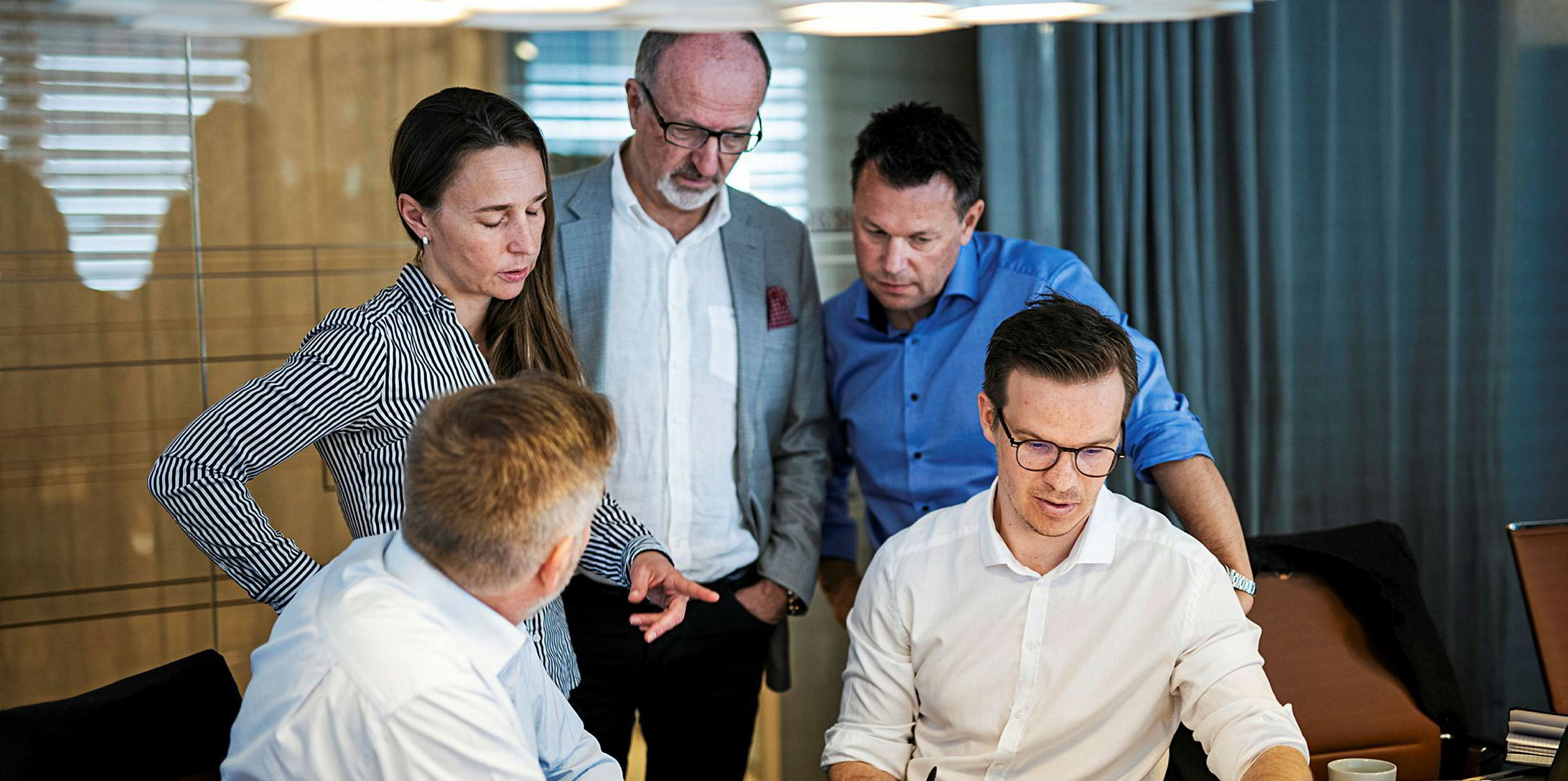Oslo’s biennial shipping exhibition is a “must-attend” event for many. Here’s what those in Norway last week learned about the state of today’s maritime business:
Confidence in shipping markets is fragile
The burst of nervous laughter from the great and the good of Norwegian shipping right at the start of the Nor-Shipping week was perhaps the most potent insight into today’s markets.
The stage was the opening ocean leadership conference at the hotel next to the expo’s Lillestrom centre, with more than 500 guests packed in for the start at 9am prompt. Prime Minister Erna Solberg took her seat in the theatrically set auditorium, followed by Crown Prince Haakon.
The moderator, former BBC journalist Nisha Pillai, strode onto the spotlit stage and acknowledged the industry has had a tough 10 years recovering from the banking crisis. So, she asked the audience rhetorically, everything’s looking good now? That was the cue for the nervous laughter.
Nor-Shipping’s opening conference tried hard to exude a sense of Nordic competence, vision and self-confidence. But ultimately, the shadow of weak markets, uncertainties over regulatory change, environmental risk and wildcards such as Donald Trump’s aggressive trade policies all dampened the mood.
Anxiety ahead of IMO 2020
With just over six months to go until new global rules on vessel exhaust emissions come into force, many would have expected public-facing shipowners and operators to be trumpeting confidence in their planning.
The reality appears far from that. At the TradeWinds Shipowners Forum, several owners who are investing time and money to ensure safe compliance with the low-sulphur rules said they remain uncertain about how the market will cope.
Highest on the list of critical questions are how much compliant fuel will be available, at which bunker ports and, of course, at what cost? A lot of hard work remains to be done to resolve these issues as the clock ticks towards 1 January.
There’s a lot of talk about decarbonisation but little action yet
At times, events at Nor-Shipping 2019 sounded like fundamentalist rallies for rapid and dramatic cuts to the pollution that ships cause by burning carbon-based fuels. Everyone seemed to agree it is the right thing to do. The only question was how?
The pledge made last year by IMO member nations to halve carbon emissions from shipping by 2050 has certainly fuelled the debate.
While LNG as a fuel continues to gain traction as a bridge to a low-carbon future, prospects for non-CO2-emitting fuels remain more theoretical than practical
But for all the talk, we have seen little action. While LNG as a fuel continues to gain traction as a bridge to a low-carbon future, prospects for non-CO2-emitting fuels remain more theoretical than practical.
For example, the Zero Emissions Energy Distribution at Sea (ZEEDS) ammonia bunker project from Wartsila, Kvaerner, DFDS, Grieg Star, Aker Solutions and Equinor is a stimulating piece of cross-sector collaboration from a group of influential Nordic players.
Yet, for now, it remains a theoretical project rather than a practical solution. Action will be needed soon if targets are to be hit.
Oslo has money to invest if you have the right project
Ship finance may be tighter than it once was, but Oslo is the place to go if you want to tap into Norwegian investors’ appetite for shipping.
In the weeks before Nor-Shipping, there was a rush by companies to drum up cash on the junior markets of the Oslo Stock Exchange.
Arne Fredly’s Hunter Group, Tor Olav Troim’s 2020 Bulkers and Belships all raised money that would have been virtually impossible elsewhere. Okeanis Eco Tankers successfully listed last year.
New York remains shut to shipping initial public offerings — with the exception of John Fredriksen’s Flex LNG, which can claim to be more of an energy market play than a shipping investment.
Last year, Oslo raised 28% of all equity capital raised worldwide, and 50% of equity for offshore companies. The bond market for shipping paper in Norway remains liquid.
Let’s talk about modernisation, not digitalisation
Digitalisation was everywhere at Nor-Shipping, and the momentum is growing.
A tidal wave of digital products and projects were launched and promoted, promising to revolutionise the way maritime businesses in virtually every niche can deliver greater efficiency and performance.
And it was clear that even the traditional exhibitors with physical products were distributing fewer printed brochures and leaflets to show visitors, preferring digital channels instead.
But as new Wallem chief executive Frank Coles observed, perhaps now is the time to start thinking and talking in a new way, to reflect the digital reality of today’s world. The veteran technologist said he has reframed the agenda in the Hong Kong-based shipmanager as no longer simply about digitalisation, but about modernisation and change.
Digital is merely the mechanism. The real issue is about how to change and grow.







